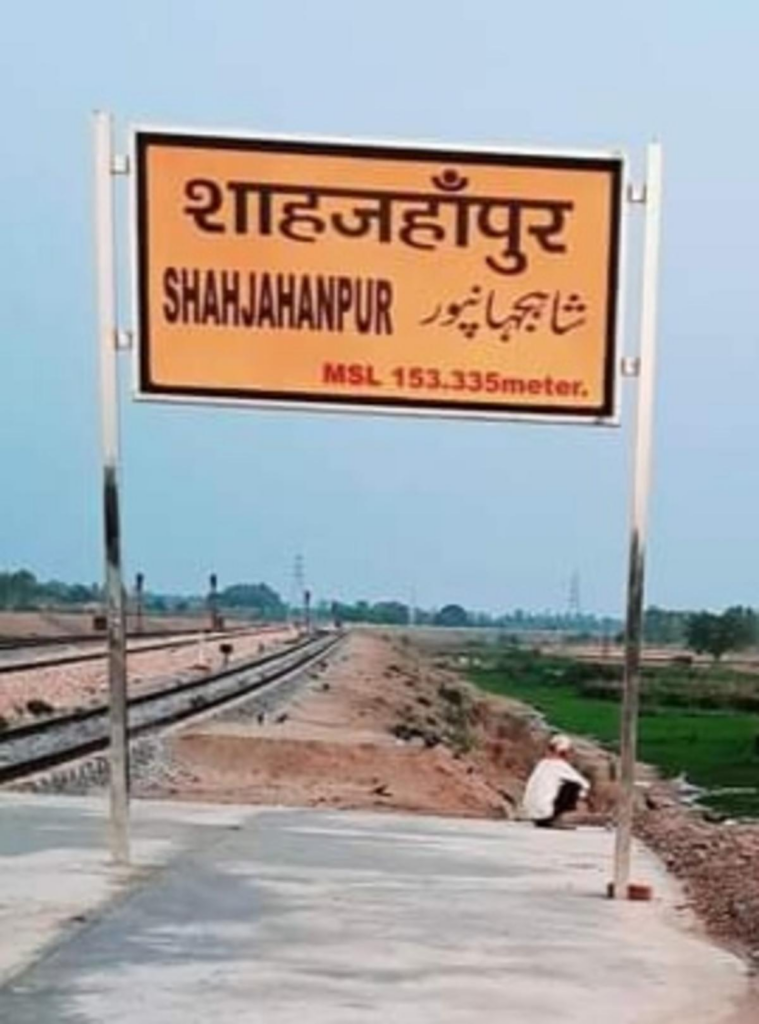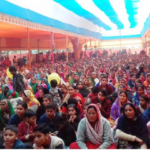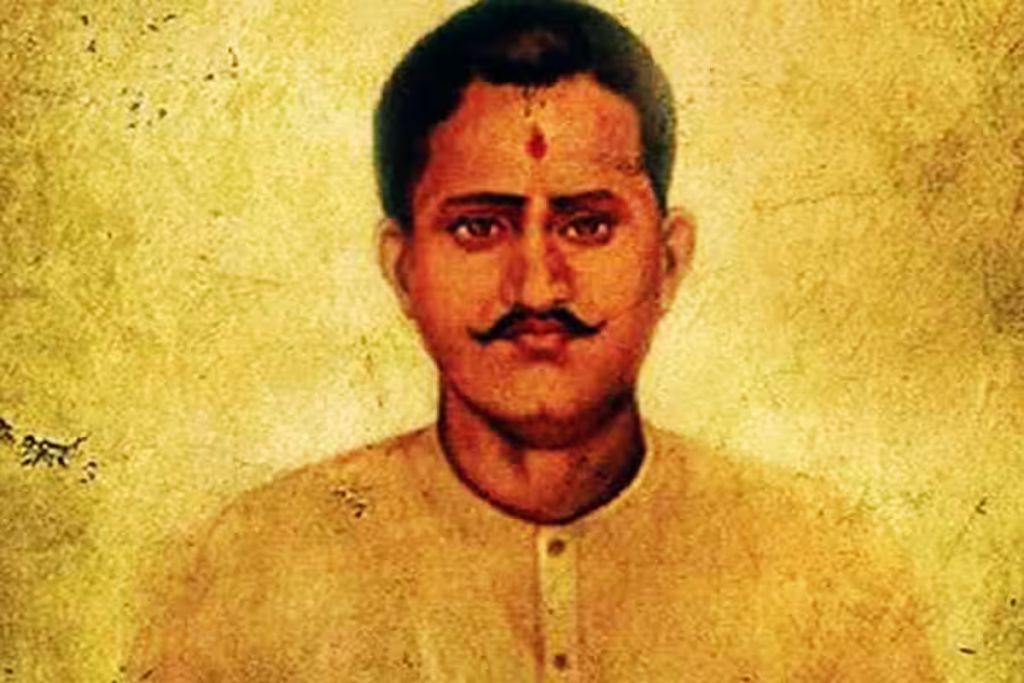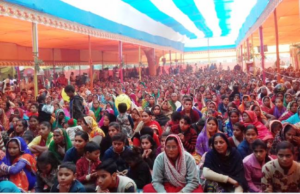BY-Vinay Arya General Secretary Arya Samaj
On 11 June 1897, a child was born in Khirni Bagh Mohalla of Shahjahanpur, a city in Uttar Pradesh. He was named Ram Prasad. In his childhood, Ram Prasad was sent to a local primary school, but he was adamant on learning Hindi. But his father decided to educate him through Urdu medium and he was admitted to Islamia School in Shahjahanpur. The father had sent his son to study, but he started playing in the hands of the students of the madrasa and got into some bad habits of reading romantic poetry books and cheap obscene novels. When he failed twice in the 7th class in Urdu, he was admitted to an English school called Mission School in the city. After passing the 8th class in first division from the Mission School, he took admission in the government school of Shahjahanpur. But due to the language stuck in his mind, he kept his surname as ‘Bismil’.

He was addicted to reading cheap novels but did not have money to buy them, due to which he started stealing from home. But the shopkeeper from where he used to get the books came to know about this. The shopkeeper complained to his father, so he stopped buying books from there. But during this time he also got addicted to cigarettes and cannabis. He had become so addicted to smoking that he used to smoke 50 to 60 cigarettes a day.

The family was worried, so a clerk used to come to an Arya Samaj temple near his house. When he came to know about this, he said that son Ramprasad, if you like reading novels, I will give you a book, read it too. Munshi ji gave Satyarth Prakash in Ramprasad’s hands, after a few days Ramprasad started sleeping on a blanket and would wake up at four in the morning. Not only intoxication, after reading Satyarth Prakash, he became so devoted to religion and patriotism that he gave up dinner. In the food he had during the day, he used to eat only boiled vegetables and lentils. He completely gave up chillies and sour things and started spending most of his time in the Arya Samaj temple…. Questions started arising in the mind that why is our country a slave?

One day, Ramprasad’s Muslim friend Ashfaq Ullah Khan came to meet him at Arya Samaj Mandir in Shahjahanpur. Ashfaq recited a few lines to his old friend in a poetic mood – Who knows this desire is in the destination of love, the desire that came out of the heart, then what I saw is in the heart… Ramprasad smiled in appreciation of such lines. Ashfaq felt awkward. Then without saying anything, Ramprasad Bismil said – “The desire for sacrifice is now in our hearts, let’s see how much strength the killer’s arms have?” On hearing this, Ashfaq became emotional and hugged Bismil. He also gave Satyarth Prakash to Ashfaq to read, after reading which Ashfaq also became ready to sacrifice himself on the altar of revolution. Although both the youths were influenced by Gandhiji’s non-cooperation movement, they believed that freedom can be achieved by following Gandhi’s path. But soon this thought was buried.

Actually, the year was 1922. This year, the Chauri Chaura incident took place in a town in Gorakhpur district of Uttar Pradesh. When the police fired on the procession of patriots of the non-cooperation movement, the angry crowd of people set the police station of Chauri Chaura on fire. Dozens of policemen died. After the Chauri Chaura incident, Gandhiji withdrew the non-cooperation movement. This filled many people associated with this movement with anger. Gandhiji was very upset. There was a young man named Ram Prasad ‘Bismil’ who was very impressed with the independence of America. But he did not agree with the methods of Congress and Gandhiji. Therefore, a new party was formed. It was named Hindustan Republican Association. When Bismil prepared the manifesto of Hindustan Republican Association, he clearly wrote that our objective is to make India a federal republic on the lines of America on the strength of revolution…
Bismil made the manifesto of Hindustan Republican Association in such a way that Chandrashekhar Azad and Ashfaqulla Khan were also very impressed by it. Due to this, some new organizations were formed in Bengal and the northern states. Their aim was also the same, freedom.

Now if revolution was to be done then guns were also needed. And for this money was needed. People were afraid of giving donations due to fear of the British. So initially these people decided that they will rob the rich and wealthy people. But this would bring disrepute to the organization. So Bismil decided that from now on they will not rob Indians but will rob those British who are robbing India.
Kakori incident One day when Bismil was travelling by train. He saw that the station master brought a bag and gave it to the train guard. The guard put that bag in a box. Bismil made a plan to rob this box. After reaching the party office he told this to his comrades. And the entire plan to rob the train was made. The train was robbed in Kakori. The box was broken and the bag was tied in three bundles. And those people fled from there. But in the meantime in hurry one of their sheets was left there. When the police arrived for investigation, they found this sheet. The sheet had the mark of the washerman. Through which the police came to know that this sheet was washed in Shahjahanpur. When they went there and inquired, they found out that the sheet belonged to Banarasi Lal. Banarasi Lal was Bismil’s associate. When the police threatened him, he told the whole story.
The police started raiding in this case. And on the night of 26 September 1925, Bismil was arrested. Apart from this, 40 more revolutionaries were arrested from every corner of India. Ram Prasad Bismil, Rajendranath Lahiri, Ashfaqulla Khan and Thakur Roshan Singh were sentenced to death. Apart from this, 12 more revolutionaries were sentenced to 5 to 10 years. The sentence of many of these was later changed to life imprisonment.
Eight months after this, on 19 December 1927, Ram Prasad Bismil, Ashfaqulla Khan and Thakur Roshan Singh were hanged. Rajendranath Lahiri was hanged two days before this, i.e. on 17 December.
These stories of revolution are part of our glorious history. All of them were definitely great people. Today they are not here but their stories will always remain with us. By reading the last part of Bismil’s biography, which he wrote while in jail, it becomes clear that even at that time the common Indian was the same as today. There were only a few people who were ready to sacrifice their lives for freedom.
Bismil writes,
‘I made many attempts to escape from jail, but could not get any help from outside. This is where it hurts the heart that in the country where I had started such a big revolutionary movement, I could not even get a revolver to save my life. Not even a single young man could come to help. In the end, I am being hanged. But I have no regrets about being hanged because I have come to the conclusion that this was what God wanted.’ Arya Samaj salutes Pandit Ram Prasad Bismil ji.







More Stories
Who is the real king of Middle East Gulf countries?
Hyderabad Movement when Arya Samajis came out against Nizam
How are shrines and mosques growing in the lap of the Himalayas.